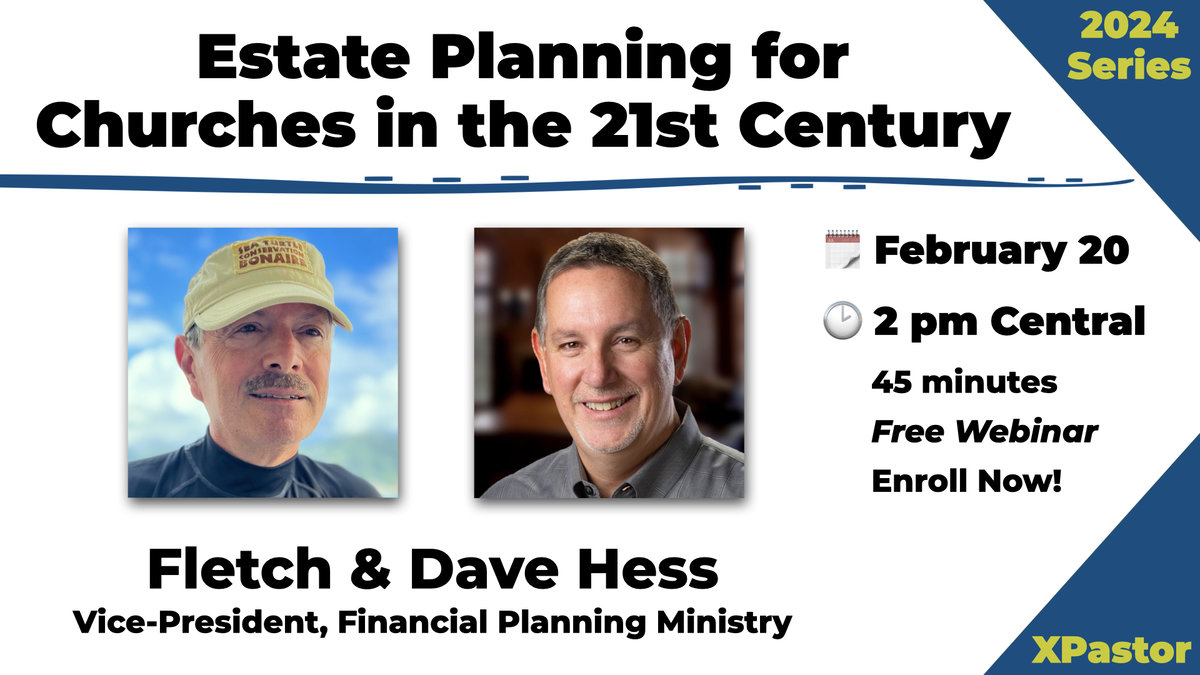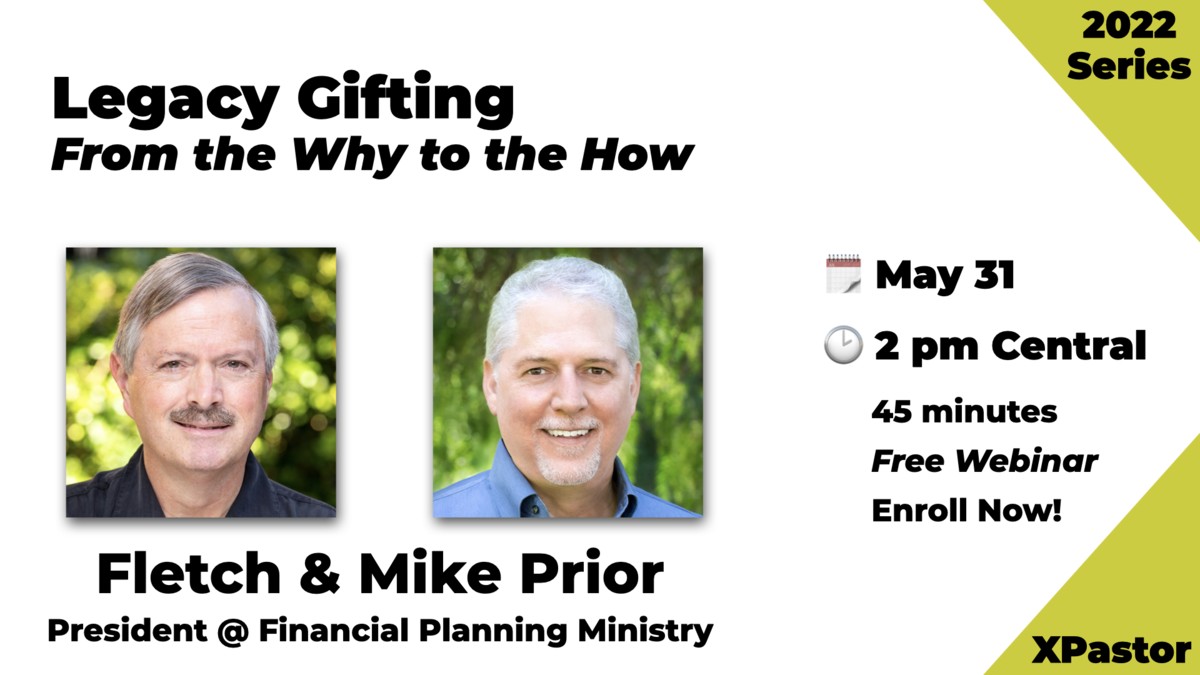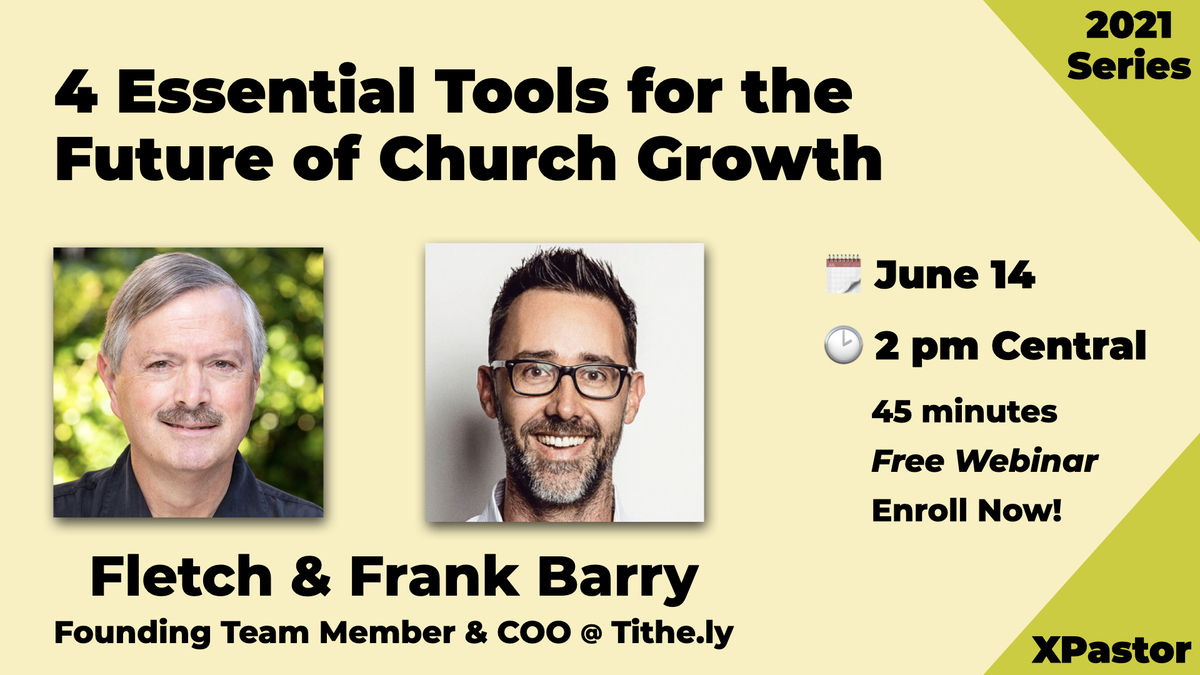When you hear the word “fundraising,” does your heart begin to pound with excitement? Or do you feel the blood drain from your face as you stand in utter terror? For many, the mere thought of raising funds for their churches causes fear or frustration. It’s often the last item on the board meeting agenda, unless the church is going into a building campaign. Even then, it seems to be an uncomfortable topic at best—and, at worst, a topic to be avoided at all costs.
Fundraising shouldn’t be this painful. Perhaps it would be easier if the mystique surrounding it were lifted. Let’s face it, few in the church have been educated in fundraising, and even fewer churches are fortunate enough to have a professional fundraiser in the congregation. So what’s the senior pastor—entrusted with the church’s budget—to do?
Lifting the curtain
Let’s start with a definition. Fundraising is asking others to partner financially to see a vision or mission come to fruition. So if, for example, the vision is “a Bible-teaching church that leads souls to the kingdom and helps people grow in their relationship with the Lord,” then that’s the vision your congregation and donors need to embrace.
The “must haves” of fundraising
In order to effectively raise funds for your church, you must have certain key bases covered. These things are non-negotiable.
1. The vision needs to be established.
Setting vision is crucial, and the senior pastor should prayerfully set the vision, not only for the church but also for each fundraising effort. What is the mission of the church? What has God uniquely called the church to do? The vision needs to inspire people to act; it needs to be something they can believe in and fully support.
2. The compelling case needs to be communicated.
The compelling case, or plan, needs to justify why the vision is achievable, and how it can be attained. What steps will be taken to ensure its fulfillment?
3. The senior pastor must be committed to raising the funds.
Just as the senior pastor sets the vision, he must be intimately involved with programs that raise funds for the church. The pastor’s level of commitment to raising funds correlates directly to his commitment to the vision. It will often be the senior pastor who asks for funds from the top givers. While he can’t be expected to handle administrative functions, he does need to understand where the church is at any point in the fundraising campaign.
4. The “science” of fundraising must be done.
Most of us are familiar with the 80/20 rule: 80 percent of a church’s funds are given by 20 percent of the people. While some would argue that this is slightly inaccurate for church fundraising, most agree that a relative minority of the congregation gives the majority of a church’s income. (Callahan, Giving and Stewardship in an Effective Church) If this is the case in your church, that minority must be identified. The pastor should be aware of the minority to maximize giving potential, while acknowledging that every giver is equally important in the kingdom. In addition, the leadership team of your church should be committed to educating the congregation on the blessings of giving (which will be discussed more fully in the next section).
There is some debate regarding how much a pastor should know about individual giving. John R. Throop, president of Summit Consulting, an Illinois-based nonprofit and public agency consulting and training firm, asks:
“Should pastors know how much individual members give to the church? Few congregations and pastors have stated policies, but many have deeply held convictions. Many churches clearly distinguish between the pastor as spiritual leader and the lay leaders as managers of the church’s temporal business. The result, however, can be an unbiblical dualist position: the belief that our use of money is not a spiritual matter. Thus pastors and lay leaders must wisely analyze the arguments for knowing and not knowing.”
One of the main arguments against knowing is that if a pastor doesn’t know about individual giving, he or she cannot be prejudiced toward generous givers or against those who don’t give as much—or not at all. On the other hand, one of the main arguments for knowing is that the pastor can “motivate greater stewardship and spiritual growth” and will be aware that “when giving stops or decreases (or jumps), it signals a change that may require pastoral attention.”
Throop concludes: “Whether the pastor knows individual giving or not, it is vital that he or she have all the information possible to be the best pastor possible. That includes, in some form, the finances of the members.”
The bottom line is that pastors must guide their congregants to be the cheerful givers they are called to be. We as believers are to give generously, but often we become complacent with our ten percent—or less. Or perhaps we haven’t been educated in giving, which leads us to the next point.
5. The staff and congregation must be educated
A church should have a plan in place to teach its congregants about stewardship. The complacency mentioned above often exists because believers haven’t been educated. They don’t know that a good steward prayerfully manages all that God has entrusted to him, and this includes money. We are commanded to be good stewards of our financial resources and to recognize that everything we have belongs to God. Psalm 24:1 says, “The earth is the LORD’s, and everything in it, the world, and all who live in it.”
There’s a wonderful quote from The 33 Laws of Stewardship that emphasizes this concept: “Christ-centered stewardship is the by-product of a Christ-like attitude.” The authors go on to say:
“Faithful dependability as a Christian steward relates to the management of money, but also to a great deal more. The “portfolio” for which we are responsible includes a wide range of components, and God’s expectation is that we make the most of each one. Think of all the “assets” you have under your management: your money, your time, your possessions, your opportunities, your influence, your relationships, and much more. And to this long list can be added the spiritual assets with which we are entrusted: the Gospel of Christ, the mystery of godliness, the secret things of God. This is no small responsibility we bear, and to handle it rightly demands absolute faithfulness.”
In his book, Proven Principles for Finding Funds, Chester L. Tolson, writes that “Stewardship is not just an ecclesiastical term for a way to get more money. It should become the constant message of the church in order to enlarge the mission of the church and enrich the lives of each contributor.”
Your congregants need to be taught that giving of their financial resources is an act of worship, and that the Lord is glorified in our giving. When the Bible tells us to be “cheerful givers,” (2 Cor. 9:7) it’s not just that the act of giving should be joyful, but also that we will experience more joy in all areas of our lives when we are good stewards of those resources. We can look forward to hearing, along with the faithful stewards described in Luke, “Well done, good servant” (Luke 19:17a).
The cycle of fundraising
When raising funds, whether for general operation or for building campaigns, you’ll usually follow a cycle: identify, interest, involve, invest, and influence:
1) Identify
Identifying your top givers was mentioned above in the “science” of fundraising. This is a crucial step. Again, you may have people in your church who would cheerfully give more to grow the kingdom, if only they were asked.
2) Interest
This is where you present your church’s vision and describe the compelling case. Help your congregants to see how your church is helping to grow the Lord’s kingdom and how they can be a part of that vision.
3) Involve
You need to show your givers how their participation in giving helps to fulfill your church’s vision. Help them to see how they can personally participate in this great endeavor.
4) Invest
Once your congregants understand the vision and understand how they can participate, it’s time to ask them to invest. This is usually the toughest step, but is the most crucial. We’ll dig more deeply into this in the next section.
5) Influence
This is where you engage your now-enthusiastic congregants and give them the opportunity to influence others. This is when you can celebrate by sharing testimonies of how God has blessed those who faithfully give to His kingdom. And, finally, it can’t be stressed more strongly that your givers, whatever they give, need to be thanked and regularly reminded of how their giving is fulfilling your church’s vision and growing the kingdom of God.
Because churches have continual needs, you must sustain this cycle. Unfortunately, for many of us, regular giving isn’t a habit, so you will likely need to have ongoing conversations and education on the topic of giving.
But the people won’t give
Many church leaders say that it’s difficult to get people to give, and statistics seem to support them—only 3-5 percent of Christians give ten percent of their income. However, Tolson argues that people really want to give—that it’s natural. He uses the expansive giving that came as a result of September 11, 2001, as an example. It’s not that people don’t want to give, he insists, it’s that we as church leaders don’t ask. He says that, “Inviting people to contribute to a cause is often the key to making it happen. It’s so simple. If you want people to give, just ask them.”
John Bisagno concurs in his book, Successful Church Fundraising. He writes, “God owns the cattle on a thousand hills. His people control trillions of dollars of God’s capital … The key is to explain to people the need, present a logical, reasonable, thought-out plan to meet the need, inspire them to meet it, and give them the opportunity.”
So, why do we often struggle with raising funds for our churches? Why does it seem so difficult to encourage our people to give? Tolson says that the answer can be summed up in just a few words. Church leaders don’t ask, and they don’t ask because:
- They are afraid to ask.
- They’re not sure the donor prospect will give.
- They think the timing is wrong to ask.
- They’re not sure of their cause.
- They are lazy.
We could add to this list:
- Money is uncomfortable to talk about.
- We’re afraid of rejection—if someone doesn’t give, we often take it personally.
If we as church leaders aren’t encouraging our congregants to give, we aren’t allowing them to experience the joy that comes from that giving. There are probably wonderful stories that celebrate giving in your church, and it’s your job as a church leader to find those stories and share them with your congregation. Celebrate how God blesses cheerful givers.
Ideas for out-of-the-box fundraising
One of the crucial steps in raising funds has already been addressed, but it bears repeating: Your church needs to educate its congregants regarding what the Bible says about stewardship. You may want to offer a program such as one from Crown Financial Ministries or GoodSense Stewardship. Perhaps it could be used in adult Bible studies or small group studies.
Many churches have a yearly stewardship service that encourages congregants to give. And of course, when going into a building campaign, there are often pledge drives and commitment cards. There’s nothing wrong with these approaches, but there are other means by which you can raise funds.
- For identified givers, the senior pastor should make personal visits.
- Have a vision dinner once a quarter or twice a year when congregants can reconnect with the church’s mission and celebrate how the Lord has worked in the church, the community, and the world.
- Have a “piggy-bank” campaign by providing inexpensive banks that illustrate your church’s vision, and encourage your congregants to put their pocket change in their banks each day. One 8,000-member church did this and raised $100,000 in four months.
- Regularly celebrate God’s blessings by highlighting givers’ stories throughout the year—don’t wait for your once-a-year stewardship sermon. Start a once-a-quarter Celebrating Stewardship Sunday or some other special event that your congregation looks forward to. Help them to see the joy that comes from serving God this way.
When your congregants begin to see how God works through faithful giving, they’ll be encouraged to give more of the treasures with which God has blessed them.
Until Jesus returns, raising funds will be necessary for churches. But it doesn’t have to be painful or frustrating. With the right vision and education, raising funds can be a wonderfully growing experience for leaders and congregants alike. Indeed, “fundraising,” Bisagno writes, “builds the kingdom and blesses the folks. Don’t be fearful and don’t be negative. Positively, joyously, abundantly, and expectantly go to the Lord and go to your people, and watch what God can do.”
For further reading
Giving and Stewardship in an Effective Church, Kennon L. Callahan, 1992.
God & Your Stuff, Wesley K. Willmer and Martin Smith, 2002.
Growing Givers’ Hearts, Thomas H. Jeavons and Rebekah Burch Basinger, 2000.
Leadership Handbook of Management and Administration, James D. Berkley, 2002.
Proven Principles for Finding Funds, Chester L. Tolson, 2003.
Successful Church Fund-Raising, John R. Bisagno, 2002,
Team-Based Fundraising Step by Step, Mim Carlson, 1997.
The 33 Laws of Stewardship, Dave Sutherland and Kirk Nowery, 2003.
Other resources
Christian Stewardship Association (www.stewardship.org)
Crown Financial Ministries (www.crown.org)
Everyday Steward, a division of Ron Blue & Company (www.everydaysteward.com)
WCA Good$ense Stewardship Ministry (www.goodsenseministry.com)
View original PDF: Essentials of Fundraising for Churches











